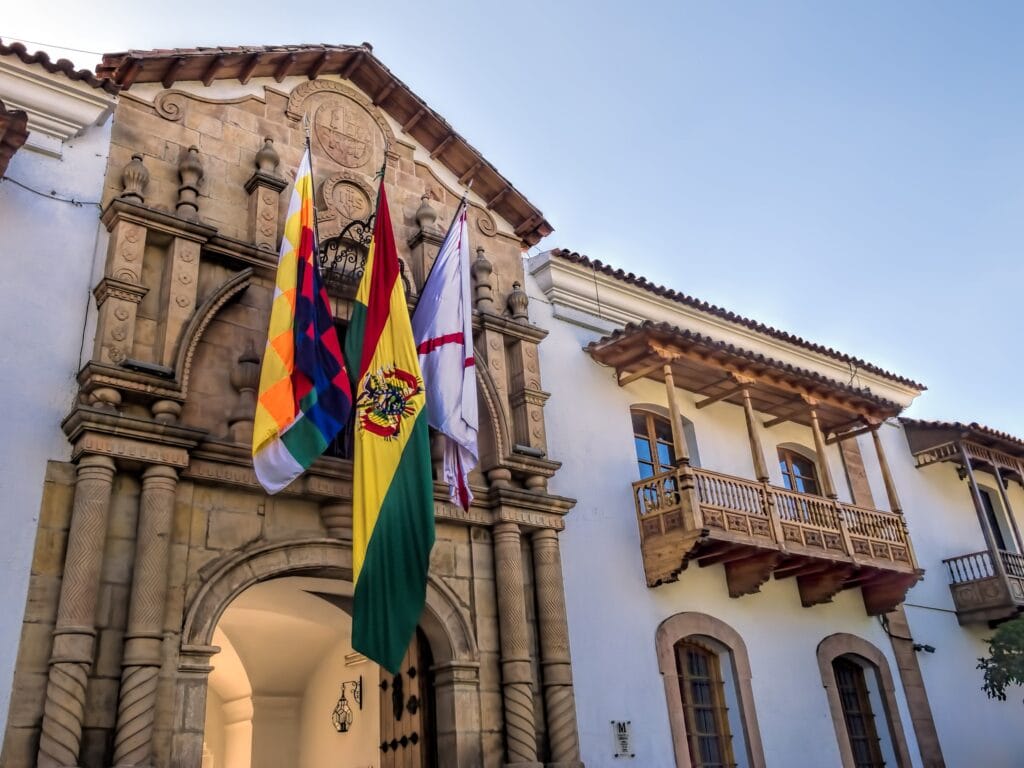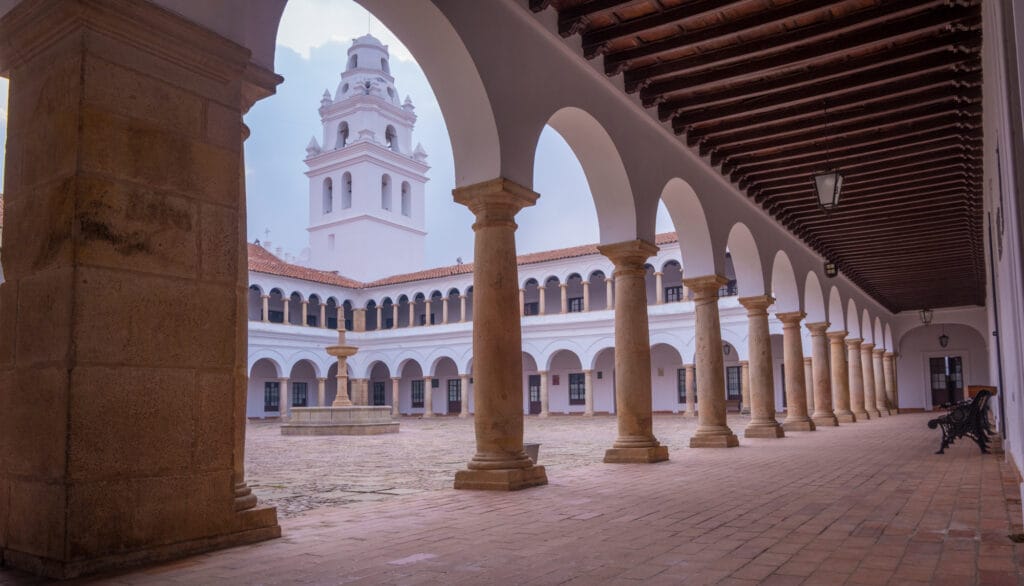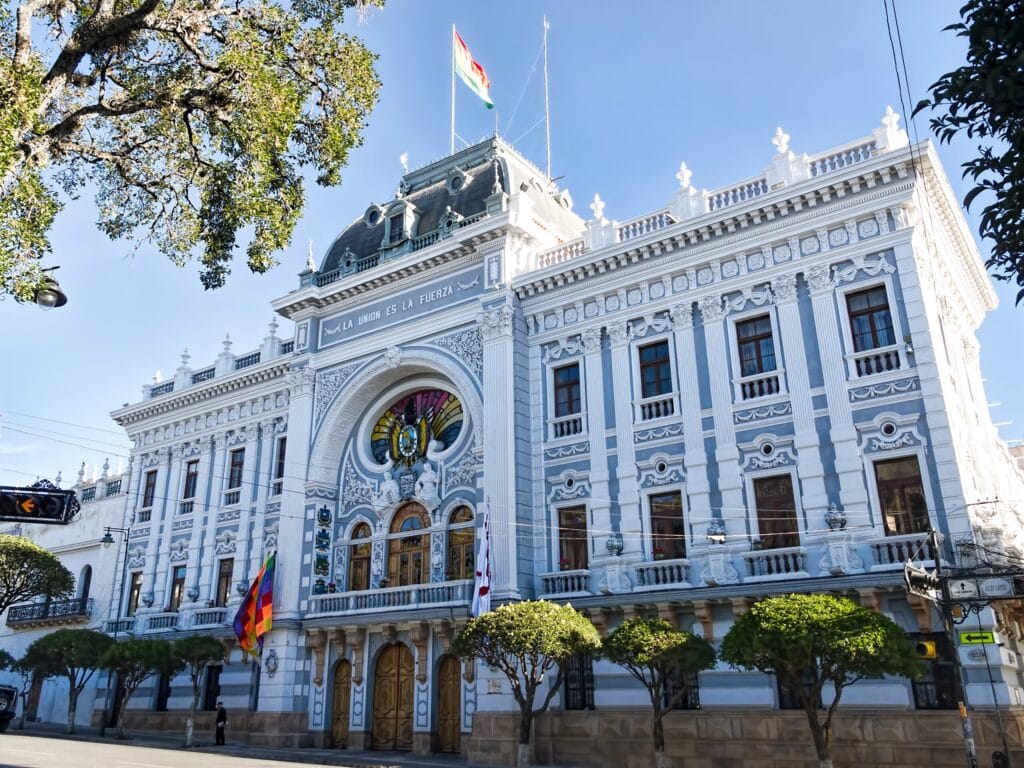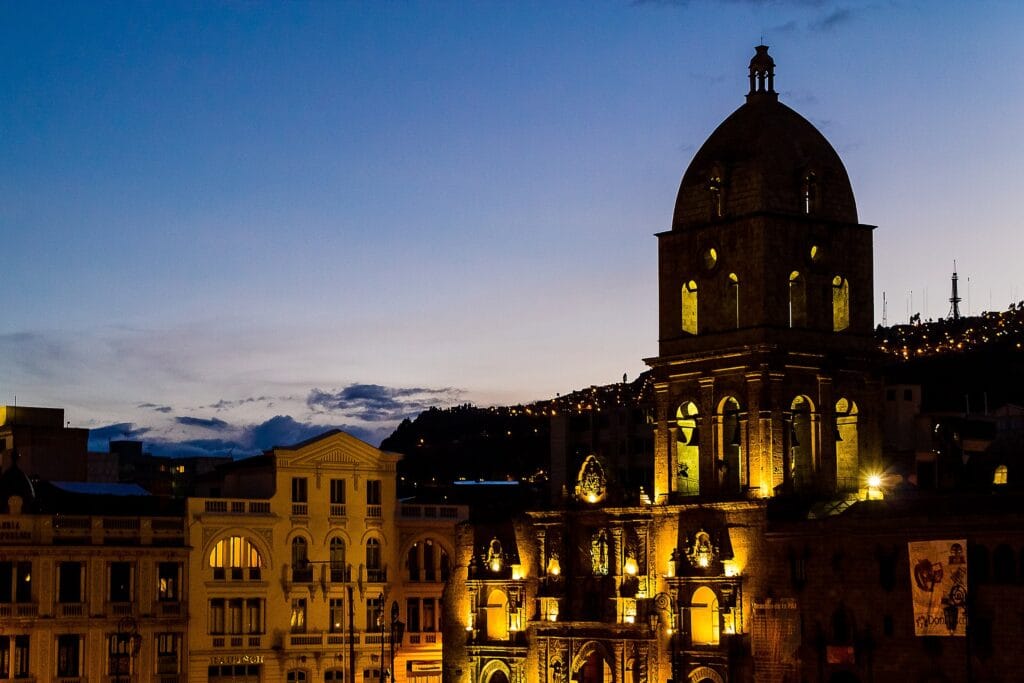Sucre City of Bolivia
Sucre, the historic city in Bolivia, is a treasure of culture and stunning architecture. It has been recognized by UNESCO for its well-preserved colonial buildings and beautiful natural surroundings. As Bolivia’s constitutional capital, Sucre is important both politically and culturally. Visitors can explore its rich history and experience the lively atmosphere that reflects the country’s vibrant spirit.
Sucre has played a significant role in Bolivia’s history, particularly during the struggle for independence. The city is known for its beautiful streets lined with white buildings that have detailed designs. Visitors can enjoy charming squares and historical sites that reflect both Spanish and indigenous cultural influences.
Visitors to Sucre can explore its fascinating history by checking out various museums, such as the Museum of Indigenous Art and the Sucre Cathedral. They can also enjoy the vibrant local culture, complete with colorful markets and exciting festivals. Sucre is known for its unique blend of history, culture, and stunning buildings, making it a must-visit spot for anyone who loves the true spirit of Bolivia.
Table of Contents
Where is the location of Sucre?

Sucre, the Historic City located in the beautiful foothills of Sica Sica and Churuquella in central-southern Bolivia, is a charming place that showcases a mix of local traditions and European influences. This combination has resulted in a stunning city filled with unique architecture that feels both familiar and different at the same time.
Inscription
Sucre, a historic city, was recognized as a UNESCO Heritage Site in 1991 due to its unique mix of local and European building styles. The architecture from the colonial period, especially the churches and government buildings, reflects how Spanish and Indigenous cultures came together. Sucre serves as an important example of a historic place that has played an important in the cultural and political history of the region.
What is La Plata? What is the history of La Plata?

La Plata is the original name of the city now known as Sucre, which is the capital of Bolivia. The city was named after a leader from the revolutionary period. Founded by the Spanish in 1538, it was initially called Ciudad de la Plata de la Nueva Toledo, which translates to “Silver Town of New Toledo.” La Plata is situated on land belonging to the Yampara people, who are part of the Characas Confederation group. In 1609, the city became home to an archbishop, making it an important religious center. Throughout the 17th century, La Plata played a significant role as a spiritual hub for the areas influenced by the Spanish in the east.
The nearby city of Potosi had many valuable minerals that significantly contributed to La Plata’s growth. La Plata was not just a trading center; it became a key place for justice, religion, and culture in the region for a long time. It was also known as a cultural hub, with important institutions like the University of Saint-Francois Xavier, the Royal Academia Carolina, and the San Isabel de Hungria Seminary located there.
What is the history of the Sucre?

Sucre became the first capital of Bolivia in 1839, and it was named after Antonio Jose de Sucre, who was a key figure in the country’s fight for independence. The city has a rich history, and you can see this in the many churches and buildings in its historic center, which covers an area of about 113.76 hectares. These places reflect the city’s Spanish roots and its early days.
What is the architecture of Sucre?

In the early 1500s, the Spanish founded the city of Sucre (La Plata), which became the first capital of Bolivia. The city is known for its beautiful churches built in the 16th century, such as San Lázaro, San Francisco, and Santo Domingo. These buildings reflect a blend of Indigenous design and European styles, highlighting the rich cultural history of the area.
These churches were built in the 16th century and include notable ones like San Lázaro, San Francisco, Santo Domingo, and the Metropolitan Cathedral. The construction of the Metropolitan Cathedral began in 1559 and took a remarkable 250 years to complete. The Casa de la Libertad, or House of Freedom, was constructed in 1621 as a part of the Jesuit Convent.
Sucre, the ancient city, was designed with a simple layout, with streets that crossed each other like checkerboards. This design is similar to other towns built by the Spanish in the Americas during the 1500s. The city combines architectural styles from different time periods, including early Renaissance, Mudejar, Gothic, Baroque, and Neoclassical, covering the years from the 1500s to the 1800s.
In the late 1700s and early 1800s, new buildings were designed with courtyards, a feature that was popular in earlier times. However, these courtyards were updated to showcase the Neoclassical style, which originated from mainland Spain. The buildings in Sucre provide a clear example of how local indigenous architectural traditions mixed with European styles to create something unique and beautiful.
What is the Sucre famous for?
The Historic Centre of Sucre, a city in Spain, is a fascinating place filled with cultural history. Its buildings were built between the 16th and 19th centuries, showing how local indigenous styles blend with the architectural influences brought by European settlers. This mix of designs tells the story of the city’s rich heritage.
The property’s boundaries include all the crucial features that make Sucre’s Historic City unique. It showcases a beautiful mix of local traditions and European styles, which is an excellent example of art and culture in Latin America. The buildings are well-kept and preserved, emphasizing this unique blend.
Why do we need to preserve Sucre significantly for us and future generations?
Preserving Sucre intact is essential for several reasons. First, it has a rich history and cultural heritage that showcases the traditions and identities of the people who came before. Second, maintaining its buildings and natural landscapes can attract tourists, which helps increase the local economy. Moreover, preserving Sucre allows future generations to enjoy and learn from its historical importance and natural beauty. Lastly, it helps create a strong sense of community and pride, connecting to our roots while working towards a sustainable future.
Why should you visit the historic city of Sucre as a visitor?

Visiting the ancient city of Sucre is a fantastic way to explore the rich history and culture of Bolivia. As the country’s constitutional capital, Sucre features beautiful colonial buildings, including impressive churches and charming plazas that tell the story of its past. This city is recognized by UNESCO World Heritage site, which means it is valued for its cultural significance. In Sucre, you’ll find vibrant local traditions, tasty food, and welcoming people. Moreover, it’s the perfect starting point to discover nearby historical sites and natural wonders, making it a must-visit spot for anyone who loves learning about different cultures and histories.
What natural attractions surround Sucre that are worth exploring?
Are you ready to discover the enchanting streets of Sucre? Dip yourself in its rich history, vibrant culture, and beautiful architecture. Whether you’re exploring colonial churches, learning about Bolivia’s independence, or enjoying the lively markets, Sucre promises an unforgettable experience. Don’t miss the chance to make lasting memories in this charming city. Book your trip to Sucre and uncover the treasures of Bolivia!
When you’re planning your adventure, enhance your travel experience by using trusted websites like GetYourGuide and Trip.com! These platforms offer a variety of enjoyable tours, activities, and accommodation options to suit every traveler’s needs.
- GetYourGuide offers a wide variety of unforgettable travel experiences. You can choose from tickets to Popular Attractions, Transportation Options, City Passes, Guided Tours, Hop-on Hop-off Bus Services, Water Activities, Day trips, and Trips that last several days in many locations around the world.
- Trip.com makes it easy to combine Flights and Hotels, Trains, Car Rentals, Airport Transfers and Attractions & Tours to create the perfect travel package tailored just for you.
Start your journey with our reliable travel partners and unlock the best of Sucre and beyond!
Disclaimer
In this post, affiliate links are included and those links are associated with well-known travel companies such as GetYourGuide and Trip.com. If you choose to purchase or book a service using those links, we may earn a commission at no additional cost to you. We focus on recommending products and services that are helpful to you and we appreciate your support!
Conclusion
We hope you find this information helpful for your next trip. If you want to learn more, check out our other travel blog posts. We cover many topics, including amazing places to visit and helpful travel tips. Whether you’re looking for hidden gems, new cultures, or helpful advice, there’s something for everyone.
Additionally, If you enjoyed the information we shared, don’t forget to explore our other travel product reviews to make your journey even better! Please take a moment to look through our previous posts and let your sense of adventure guide you on your next journey! We wish you happy travels and look forward to sharing more with you in our next blog post!




